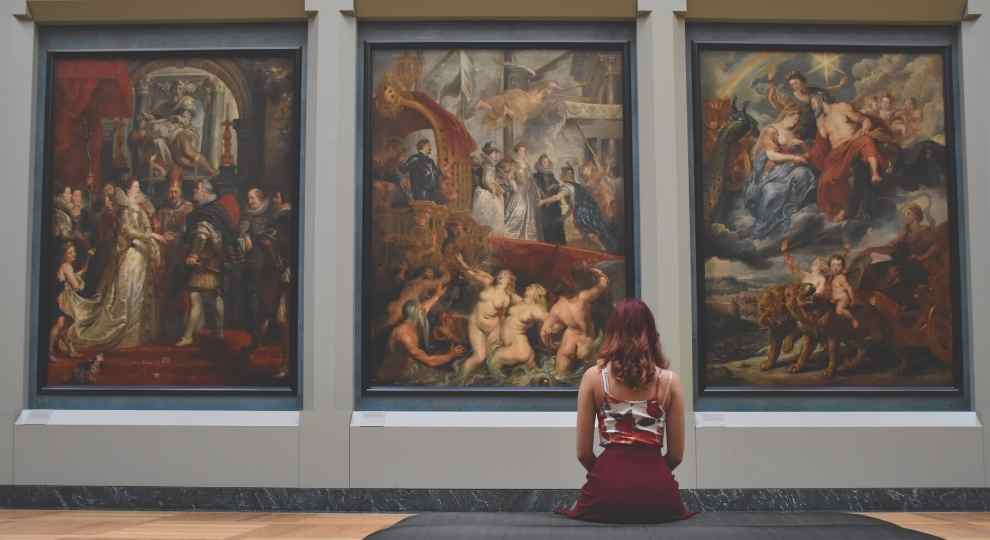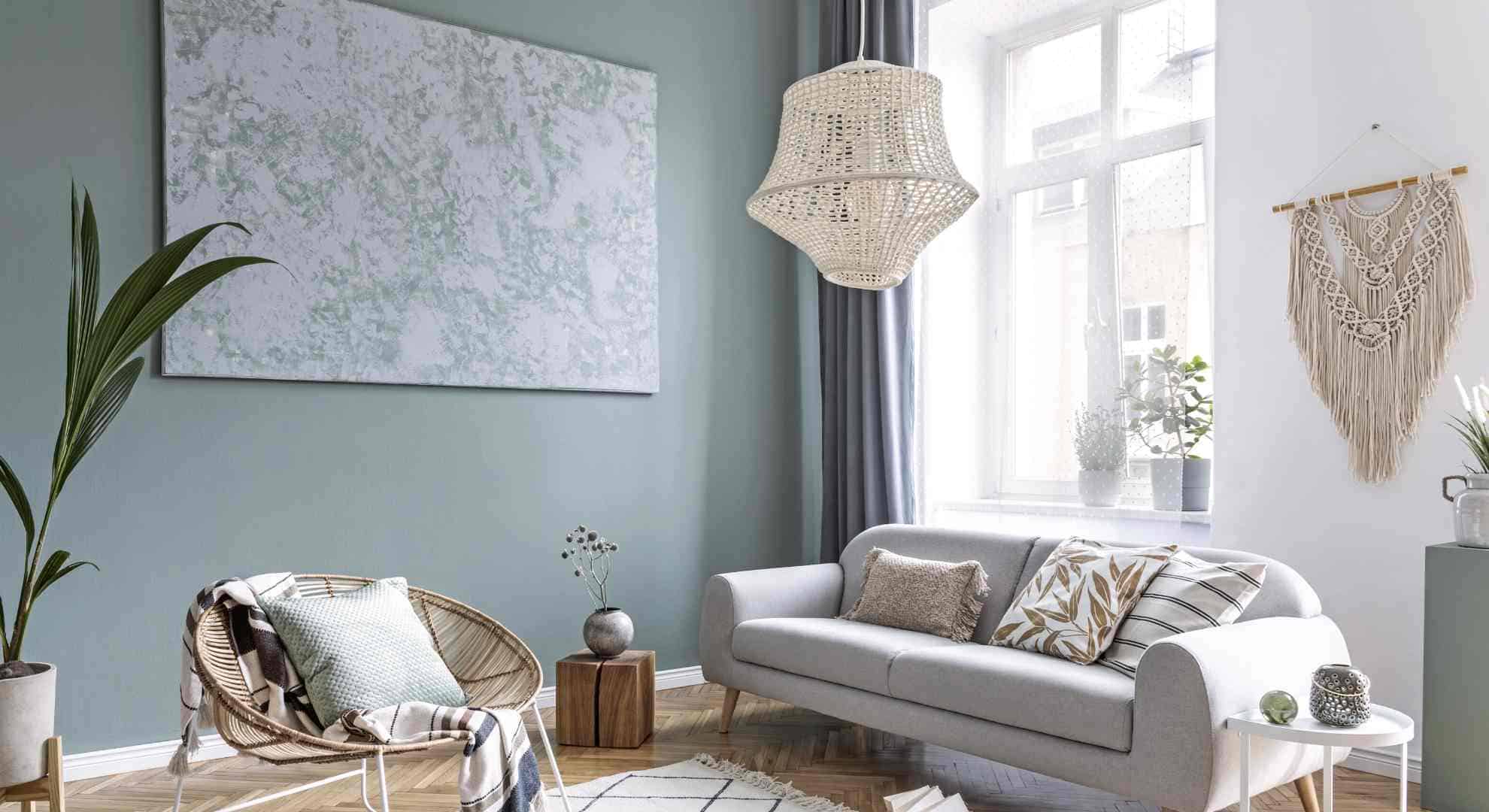If you’re a regular visitor to my blog, you may have learned that I have a bit of an obsession when it comes to art. From my viewpoint, knowing the right art style to add to a space can make or break the décor.
That’s right – you can either create a WOW factor that pulls the room together or ruin an almost perfectly styled room with an eyesore.
There are several reasons why I’m passionate about art, but I’ll just mention two. First, nothing really impacts a space to the degree art can. Second, you can find art regardless of the budget you are working with.
Finding Your Art Style For Your Decor
There’s no right or wrong answer when it comes to finding your art style for your decor. It really depends on your personal taste and what you find aesthetically pleasing. However, there are a few things to keep in mind when choosing artwork for your home.
First, think about the overall mood you want to create in your space. Do you want it to be calming and relaxing?
Or maybe energetic and vibrant? Once you have a general idea of the mood you’re going for, start browsing art that corresponds with that feeling.
Second, consider the size of your space and the other furnishings in the room. You don’t want to overwhelm the room with too much color or too much detail.
What Are The Different Types Of Art Styles?
A few of the more popular art styles include Abstract, Contemporary, Fine Art, Modern, and Pop Art. There is also a growing debate on Photography being classified as an art form. To learn our take on it read What Makes Photography Art? Join The Debate
What Is Abstract Art?
Abstract art is a form of art in which the artist uses shapes, colors, and textures to create an image that is not based on reality.
Abstract art can be emotional or intellectual, depending on the artist’s intention. Some abstract artists create pieces that are meant to be interpreted by the viewer, while others use abstract art as a way to express their own thoughts and feelings.
Abstract art is often associated with movements like surrealism and Dadaism, but there is no one right way to create abstract art. Every artist has their own unique approach to creating abstract images.
What Does Contemporary Art Styles Look Like?
Contemporary art styles are ever-changing and constantly evolving, making it difficult to define a specific look. However, many contemporary artists are known for their use of bright colors, abstract shapes and designs, and eclectic mix of mediums.
Many contemporary artists also strive to create pieces that are interactive or that invite viewer participation, opting for nontraditional displays or presentations. Some popular mediums used by contemporary artists include painting, sculpture, installation art, digital art, and performance art.
Describe Fine Art
Fine art is a term that is used to describe artwork that is created with the intention of being appreciated for its beauty and intellectual or emotional power, as opposed to its function as a tool or object.
Typically, fine art pieces are made by professional artists who receive formal training in the arts, and they often use traditional mediums such as painting, sculpture, and drawing. However, recent years have seen an increase in the use of nontraditional media by artists.
Fine art can be appreciated by anyone regardless of their level of education or artistic knowledge, and it often elicits strong emotional reactions from viewers. Some people view it as a form of self-expression or spiritual devotion.
What Is Modern Art?
Modern art refers to a wide range of art movements that began in the late 19th century and continued throughout the 20th century. These movements were in response to the traditional styles that had dominated the art world for centuries.
Some of the most famous modern art movements include Cubism, Futurism, Dadaism, and Surrealism. Each movement embraced new techniques and ideas, often breaking with traditional notions of what art could be or should be.
Modern art can be difficult to define, as it covers such a wide range of styles and ideas. However, one common characteristic is that modern artists sought to redefine the boundaries of what could be considered art, often experimenting with new techniques and mediums.
Does Photography Qualify As Art?
Yes, photography can be considered an art form. Some of the earliest photographers were highly respected for their work.
Photography is an art form because it involves creative expression and skill. Photography can be used to capture moments and tell stories, or to create beautiful images that evoke emotion. Photographers must have a good understanding of light and composition, as well as technical skills in order to produce great photographs.
Many photographers take great care in selecting the right subject matter, framing their shots, and post-processing their photos to achieve the desired effect. There is a lot of thought and creativity that goes into making a great photograph.
What Is Pop Art?
Pop art is an art movement that emerged in the 1950s. It is characterized by its use of popular culture imagery and its seemingly “simple” compositions.
Pop artists sought to redefine the meaning of art by using familiar images from everyday life. They believed that these images could be appreciated by a wider audience, and that they could be used to communicate complex ideas in a more accessible way.
Some of the most famous pop artists include Andy Warhol, Roy Lichtenstein, and Jasper Johns.
How Do You Determine Your Art Style?
Although it’s true that art is subjective and is influenced by someone’s tastes, feelings, and opinions, rules still apply. Since your goal is to create a stylish and cohesive home, you need to choose decorative accents that play nicely with your existing home furnishings.
Keep in mind that even if two people purchase the same piece of art, the way the art is framed and the environment it is placed in will make it unique.
Here are some of my pro tips to help you figure out your style with confidence.
Why Your Art Style Should Be Based On Emotions?
Several years ago, I visited a local department store while working with a client who hired me to add a stylish twist to her family room.
During our car ride, my client complained of the stale gray color palette her designer had chosen. I reassured her that it was an easy fix and mentioned her room might benefit from a few mustard yellow or rich navy blue accents.
Upon arriving, we each went separate ways. Karen decided to “help” me by grabbing items that fit my description. Within fifteen minutes or so, her shopping cart was overflowing with everything yellow, navy, and nothing picked was a winning item.
My cart had three items, each of which caused an immediate reaction. “I love that, O my goodness, this is perfect.”
Karen asked, “How do you figure out what would work in the space?”
Here’s the lesson – I never walk into a department store with a solid plan. My choices are based on what speaks to me and evokes an immediate reaction.
My motto is, I’ll know it when I see it. If you see something and it fosters feelings of excitement, it may be something you could work with.
You should NEVER talk yourself into a purchase.
Have you ever planned to shop for a specific style dress for a formal event? Most likely, you ended up purchasing the complete opposite of what you had imagined for many reasons. The cut and style of the winning dress flattered your body type, it was unique, etc.
Shopping for art should be no different.
Remember Your Art Style Is Personal
It’s important to remind ourselves that it’s our home and not that of our opinionated parents, siblings, or friends. Yep, I totally went there!
Nothing can undo our confidence like a sly comment from someone we love. Peer pressure can easily change our feelings within seconds, making us fall out of love with something that once stirred immediate joy in us.
Art should be personal and something that makes “you” the owner happy. For this reason, it’s best NOT to make it a habit of asking too many people for their opinion.
I’m afraid if you fall into a pattern of qualifying your every decision, you may never be content with any of your choices.
Keep in mind that even if someone else is not an instant fan of your choice, your reaction or explanation can win them over.
For example, if you explain the reason you purchased this “Love Is The Answer” graffiti print is because it reminds you daily that “Love Is Answer” to most of life’s issues and it’s impacted your happiness – that’s powerful!
Narrow Down Different Art Styles
At times it can be a challenge to find what we like; therefore, work backwards. Begin by eliminating different art styles and taking them out of the mix.
Keeping in mind, the methods mentioned above add several pieces to your shopping cart with the knowledge that you will be reviewing the cart to remove your less favorite choices.
Your shopping experience will look something like this. You’ve added five items to your cart and removed three out of the five. As you continue shopping, you add more items and finally settle on three top winners.
Pro Tip: When creating gallery walls, you can elevate the design by mixing and matching pieces. There is no need to feel loyal to any one art style.
Where To Place Art In Your Home?
The simple answer is anywhere you want!!
The living room is definitely the most intimidating which is why I dedicated an entire post explaining different art styles which can be viewed here, Ways To Decorate A Large Living Room Wall.
The bedroom is meant for relaxation, and the artwork should be a reflection of that. Large scale pieces or a series of prints directly over the bed usually work best. Try to look for soothing colors or abstract art.
Placing art in your home office is a great way to keep you motivated and inspired. Look for art prints that are related to your employment.
People often neglect to style their bathroom, which is a shame since simple signage could also prove useful. Let’s face it; some guests can benefit from reminders. You should go with more calming art for master bathrooms and can even stack two prints over the commode.
Since the kitchen is the heart of the home, it’s prime real estate when it comes to including different art styles. Try to keep your art simple, small, and in the details so as not to clutter the space.
Ways To Display Different Art Styles?
Of course, there is the traditional way of hanging frames by merely using nails. We wanted to share additional methods to inspire our readers to think outside of the box.
Renters shy away from this displaying many frames due to being responsible for repairing the walls before moving out, here is a good solution.
One of our favorite ways to display many frames is by creating a rotating gallery. This can be accomplished by installing a floating shelf, as shown by the techniques below.
The videos below will show you how to create two different easy DIY floating shelves. You can make them any size or color to best suit your space.
https://youtu.be/wki3wMAbtLghttps://youtu.be/otkPY5m9dP4
Mixing and matching different art frames styles can create an eclectic vibe. The same goes for adding in photo mats or canvas prints in a gallery.
Update Your Art Style From Time To Time
Since art is a way to express yourself, keep in mind it is likely going to evolve as you age, learn new hobbies and interests.
What appealed to you when you decorated your first apartment would probably make you chuckle now. Over the course of your life, you may have gotten married, added children to the mix, and so on. When searching for art, try to incorporate images with meaning and relevancy to your household.
You’ll be surprised what a difference adding in an art print can be for both a room and your demeanor.
In Conclusion
View your art style as a way to express your personality within your home. Look for ways to keep yourself inspired by adding in a meaningful quote, or how about the ultimate destination you plan to visit?
For more home styling tips and tricks drop by anytime. Hey, we’re always up for company.














Leave a Reply